Have you ever seen those bright, wavy, colourful turbans worn by folks in Rajasthan and wondered what is the story behind it? That’s the magic of Leheriya craft, one of the most beautifulof Rajasthan’s tie-dye traditions that brings a burst of colour to any outfit!
At iTokri, we’re all about celebrating the lively spirit of Leheriya.
Leheriya craft in India, whose name literally means “waves,” captures the energy of desert breezes in every swirl and twist.
Think of colours like sunshine yellows, ocean blues, and fiery reds, each Leheriya print is like a mini-festival of colours! Come along as we embrace the beauty of the Leheriya craft revival in this blog. 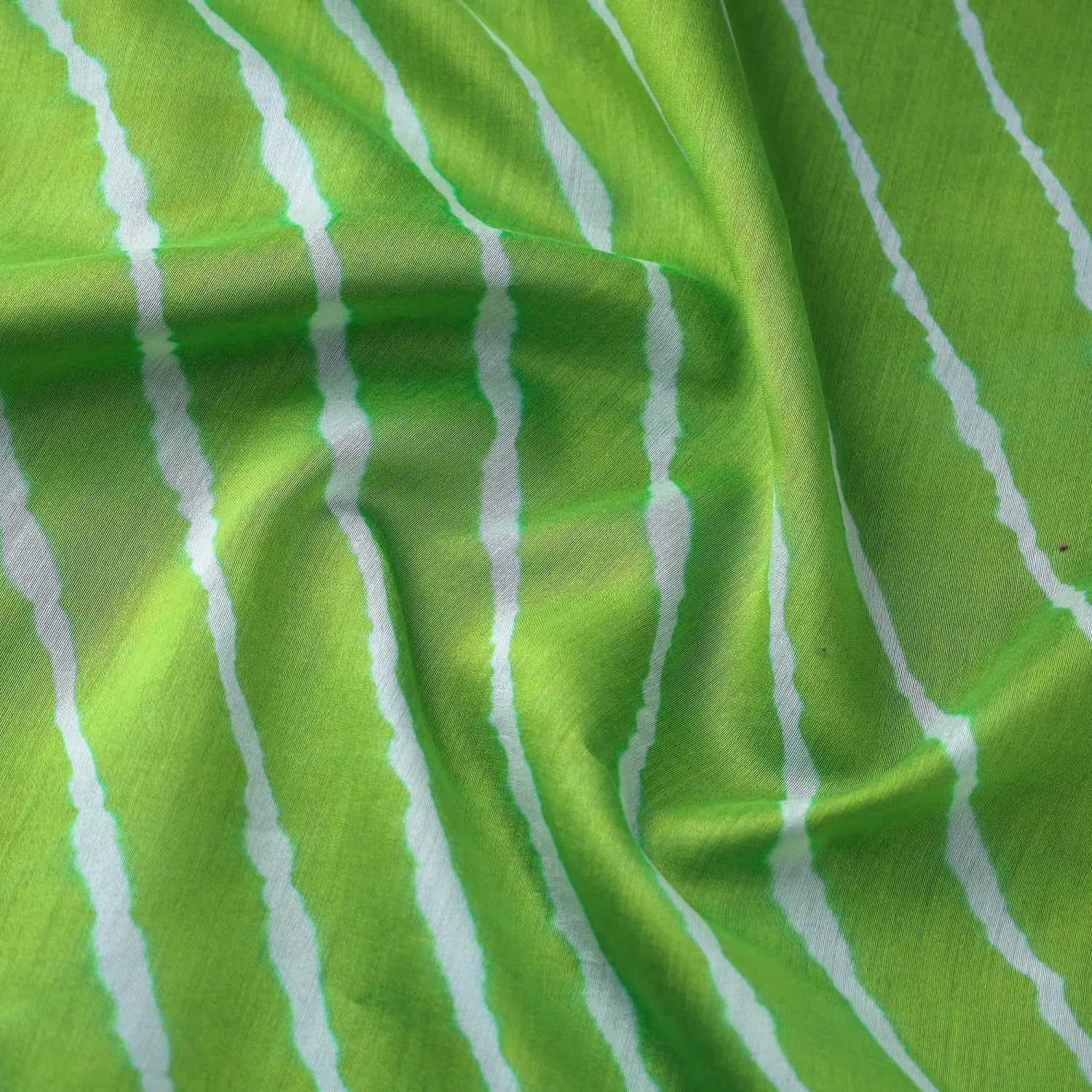
What Is Leheriya? The Meaning Behind the Waves
Among Rajasthan’s famous crafts, Leheriya tie dye truly stands out. Inspired by the Hindi word ‘Leher’, which means ‘wave’, these beautiful Leheriya tie-dye techniques have been a part of Rajasthan’s traditions for centuries. It's inspired by how the hot winds in the desert cause wave patterns in the sand.
Leheriya, the art of Rajasthan's textile, creates vivid colours and artistic patterns. Leheriya’s tie dye techniques use vivid zigzag, diagonal and chevron patterns that mimic the waves. Many people around the world, including Rajasthan, love this beautiful Leheriya craft.
Every piece we make at iTokri is a conscious attempt for Leheriya craft revival and introduce the traditional Leheriya craft to the world.
Also, read our blog on Embracing the Beauty of Traditional Leheriya Design From Rajasthan
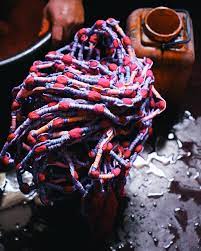
The Origins of Leheriya: A Craft Rooted in Rajasthan
The history of Leheriya is as vibrant and flowing as the waves it represents. Historians say that the Leheriya craft in India dates back to the 17th century. Back then, artisans used five different natural dyes made from plants and minerals.
In the 19th and early 20th centuries, Leheriya printing was popular among the elites of Rajasthan, it wasn’t just a part of their culture but also a sign of status. Traders and merchants often wore Leheriya pattern turbans in bright colours for years. For the longest time, it was mostly worn by the people of Marwar in Rajasthan. Moreover, the Rajputs also wore Leheriya turbans as a symbol of showcasing their heritage.
Over time, Leheriya tie dye techniques spread beyond turbans and included cholis, dupattas, and other pieces of clothing. Today, different types of Leheriya like Mothra, Pachranga, and Satranga have become famous around the world.
Did you know? On August 15, 2024, during his speech for the 78th Independence Day, our honourable Prime Minister, Mr. Narendra Modi, proudly wore a traditional Leheriya turban.

Image credit:- The indian Express
How Leheriya Is Made: The 7 Tie-Dye Technique Explained
From the Leheriya fabric selection to putting multi-colour variations, Leheriya craft journey through the seven creative steps. Here’s a sneak peek into the 7-step Leheriya tie dye techniques:
1. Fabric Selection
In the first step, artisans chose fabric online, typically a soft cotton or silk. The quality and feel of the fabric matters, as they have a major impact on how well the dye sticks and the final beauty of the design!
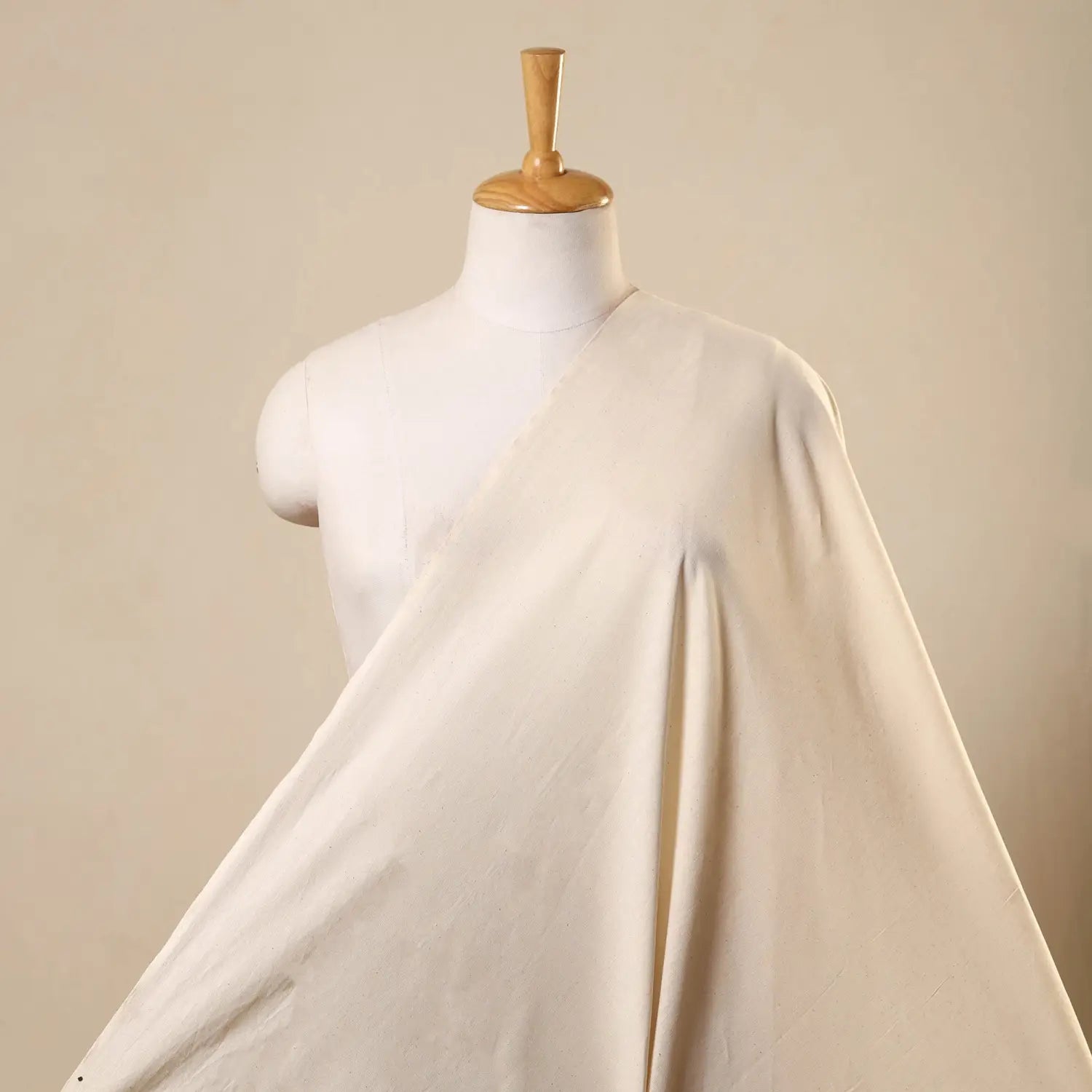
2. Rolling & Twisting
The fabric is then rolled and twisted into tight bundles using the Leheriya tie dye techniques which involves controlled amounts of dye reaching certain areas and dyed resist areas.
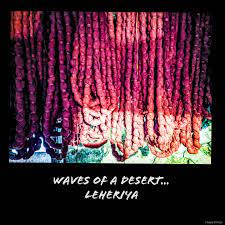
Image credit:- Facebook
3. Tying with Threads
Thin threads are then used to tie tightly around the rolled fabric. The thread ties restrict dye from penetrating certain areas of the fabric to create the striped wave effect that results from the Leheriya tie-dye technique.

4. Dyeing Process
The tied fabric is then dipped into vibrant dye colours. Dye saturates exposed areas of the fabric, while the tied sections remain untouched.
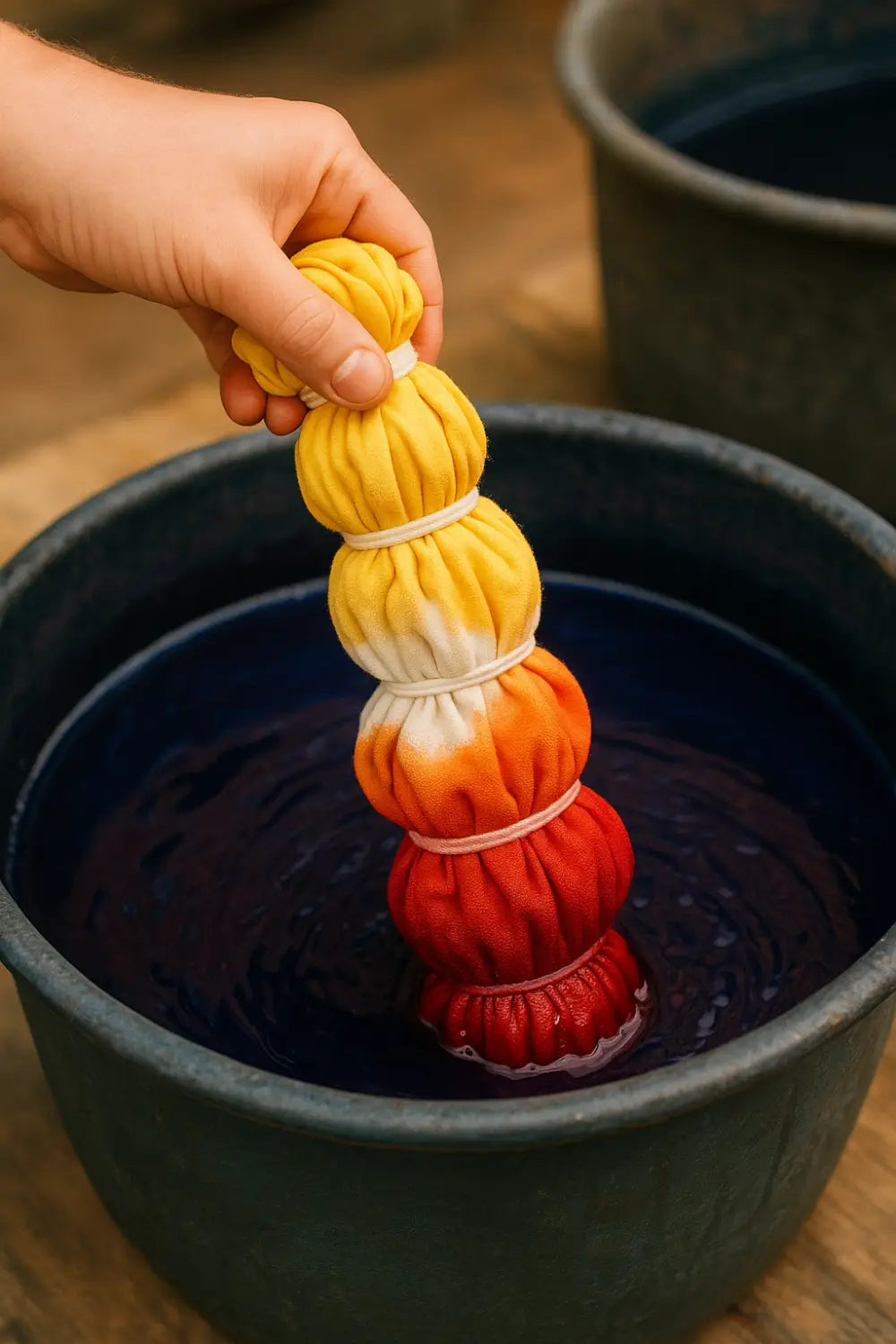
5. Drying & Untying
There is a drying process after the tie dye. Now dry, the threads can be carefully released to reveal vibrant stripes and waves of colour created using Leheriya tie-dye techniques.
6. Multi-color Variations
To add even more colour, the process is repeated, using a different dye at each stage. The layering creates bold and bright designs, such as Panchranga (five colours), and the visually striking Satranga (seven colours).
The "panchranga" Leheriya design uses five colours. Also, the number 5 is auspicious in Hinduism. Another lovely Leheriya design is the "satranga," which shows off all the bright colours of the rainbow - seven in total (2)
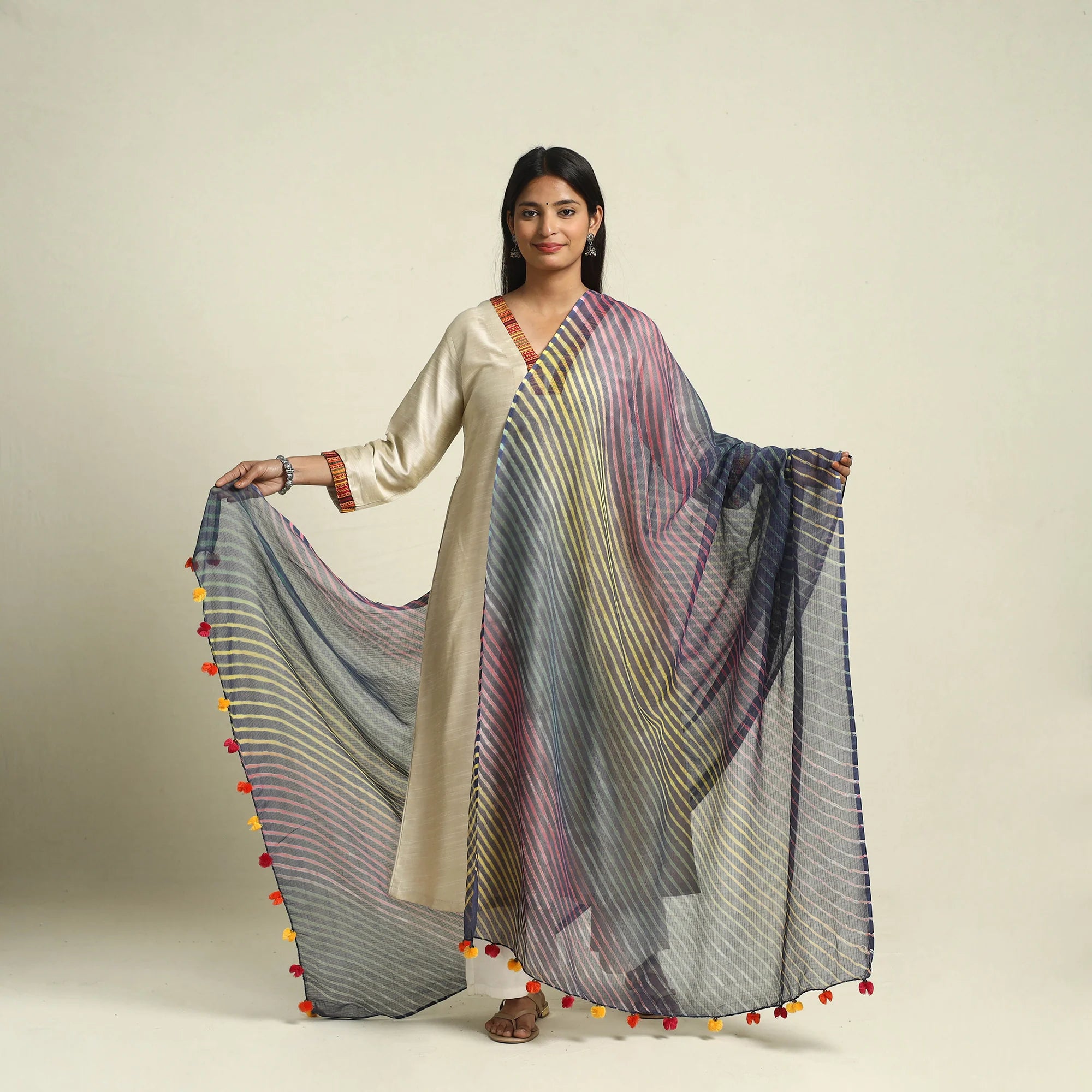
7. Finishing Touches
Finally the Leheriya fabric is washed, checked and ironed properly. By this, we come to an end of the Leheriya printing process and after that, the Leheriya fabric can be stitched for making beautiful handcrafted clothing or women's accessories.
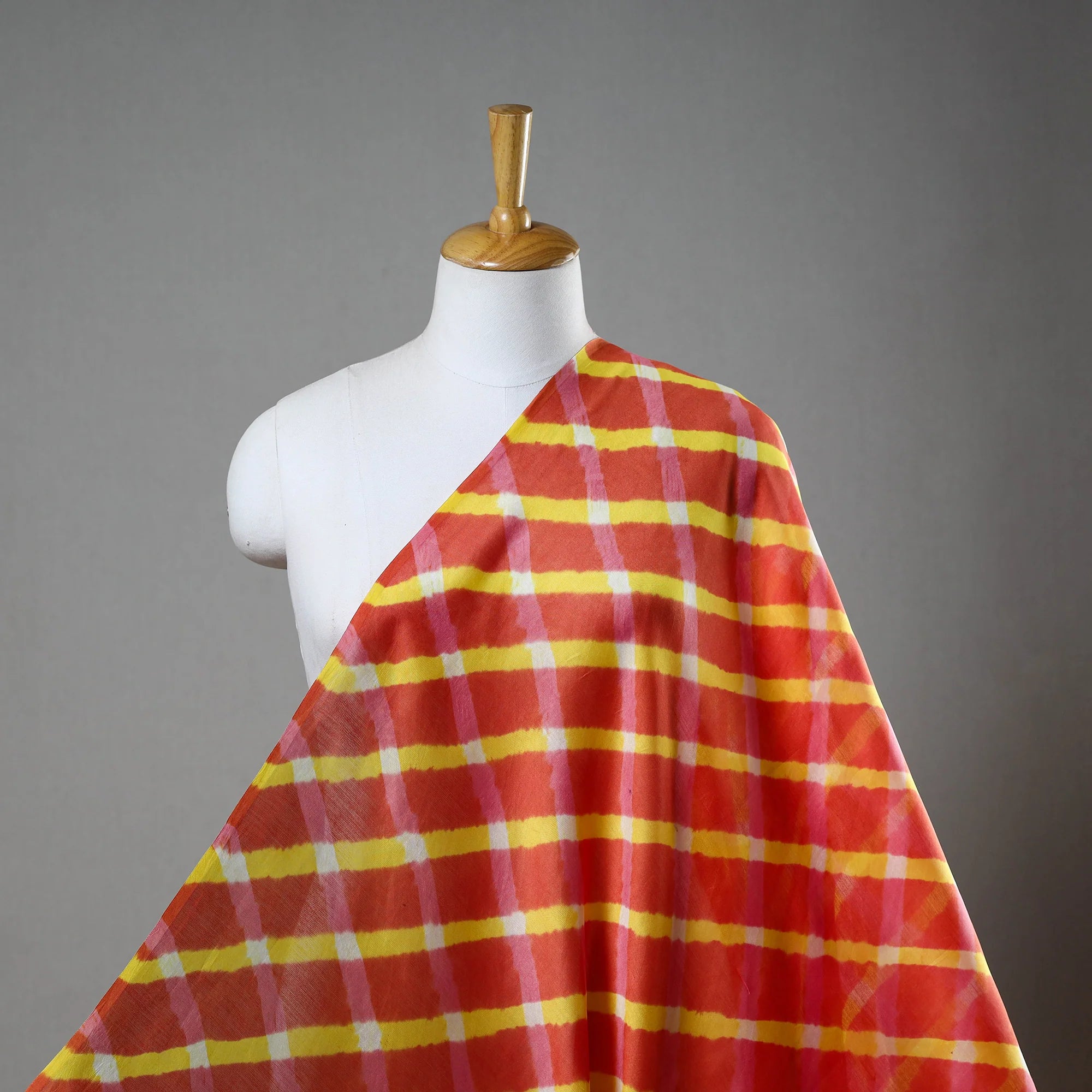
Cultural Significance: Why Leheriya Is Worn During Monsoons
Leheriya, one of the Rajasthani tie-dye techniques, is worn by the people of that region to celebrate rain, which symbolises joy, fertility and new beginnings in this often-dry land.
-
Symbol of New Life: Leheriya print is worn to honour the monsoon rains that signify new life, happiness, and hope for successful crop harvests.
-
Traditional Festive Attire: The Teej festival is celebrated by women wearing Leheriya print ethnic pieces to honour the arrival of rain.
-
A Celebration of Colours: The bright, wavy colours of the Leheriya pattern are comparable to the energy of the monsoon season, which also embodies the celebration of Rajasthani culture.
-
A Ritual and Festive Wear: Leheriya design is evident in the attire we wear on several occasions during rituals and celebrations.
-
An Auspicious Print: The Leheriya pattern, which is symbolised by waves, is auspicious as it symbolises harmony and hope.
-
Rajasthan Connection: The Leheriya craft in India connects people to Rajasthan's unique cultural heritage, its history, and its artistry.
Leheriya vs Bandhani: What Sets Them Apart
Both Leheriya and Bandhani are vibrant tie-dye crafts from Rajasthan, but they each have their own special charm. Here’s how they stand apart!
|
ASPECT |
LEHERIYA |
BANDHANI |
|
Meaning |
Derived from the word leher, which means"waves" |
Originates from the word "bandhan," which means "to tie." |
|
Pattern Style |
Zig-zag or diagonal stripes that are similar to wave patterns. |
Dotted designs, frequently in floral or circular shapes |
|
Technique |
The fabrics are rolled up diagonally and twisted before being dyed |
Small pieces of fabric tied in tiny knots |
|
Visual Effect |
Linear, striped appearance |
Complex clusters, motifs, and dots |
|
Typical Colors |
Bright yellow, red, blue and green colours |
Rich tones with contrasting dots (red-white, yellow-green, etc.) |
|
Cultural Use |
Typically worn during monsoon festivals like Teej |
Popular in Gujarat and Rajasthan during religious ceremonies, weddings, and Navratri |
|
Regional Origin |
Primarily Rajasthan |
Gujarat and Rajasthan |
|
Complexity |
Simpler wave patterns |
More detailed and time-consuming |
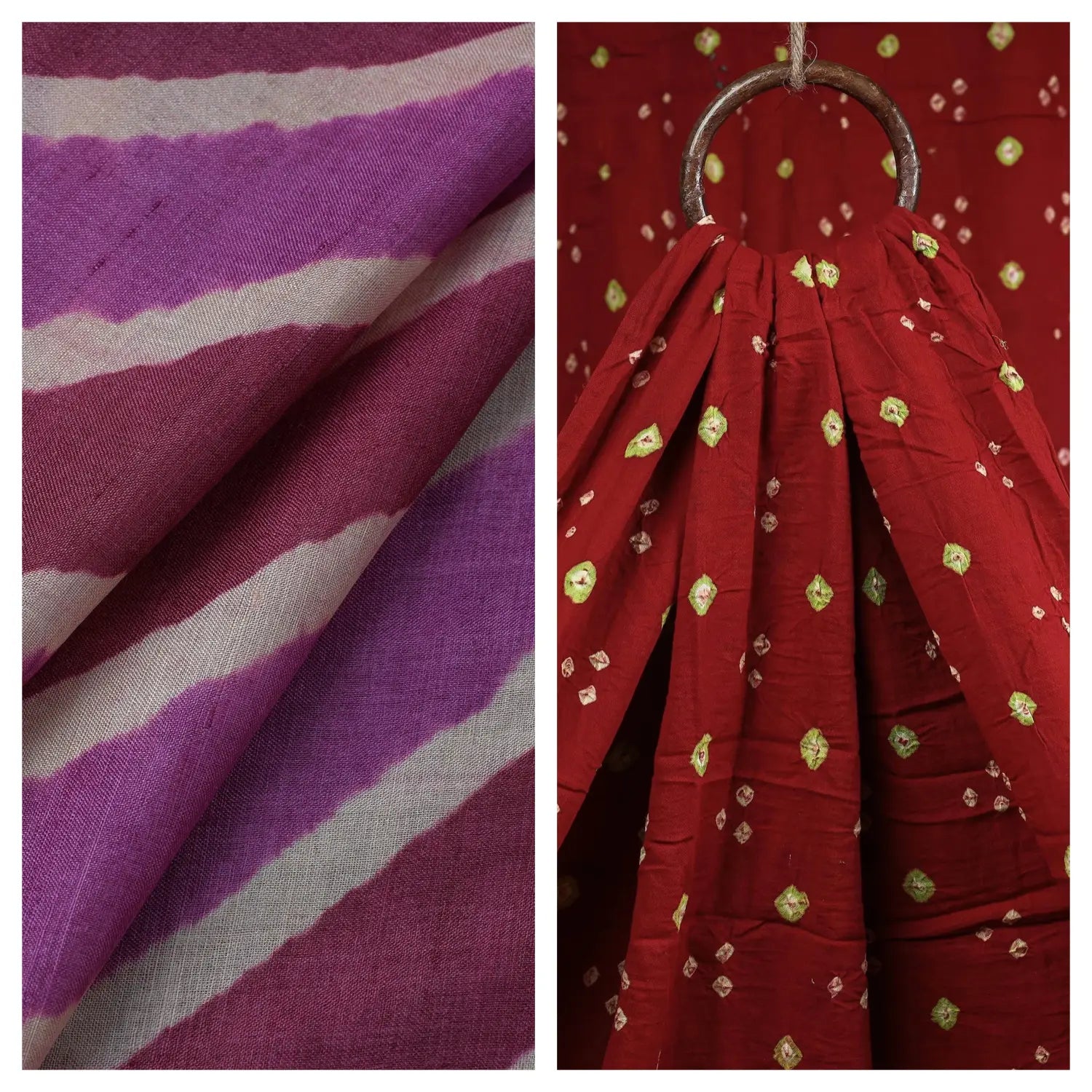
Handcrafted Leheriya Printing Products at iTokri’s
1. Handcrafted Leheriya Cotton Saree
Looking for beautiful Leheriya sarees for women? All you need is iTokri’s cotton saree with bright Leheriya patterns, which is perfect to add a pop of colour to any occasion.
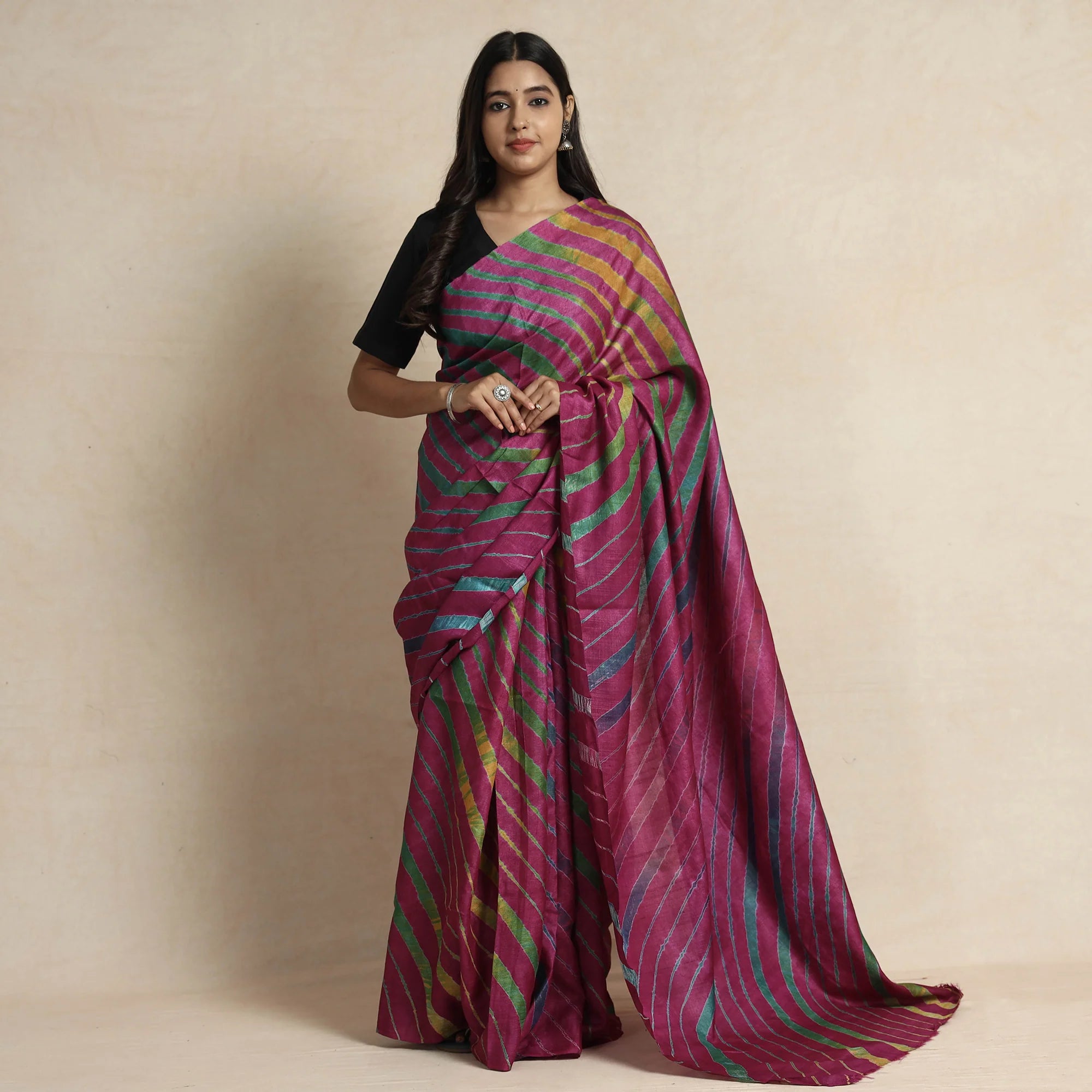
2. Rajasthani Leheriya Dupatta
Get a swirl of traditions with our collection of Leheriya dupattas for women online. A lightweight Leheriya dupatta comes in a vibrant colour palette and can energise any solid outfit. 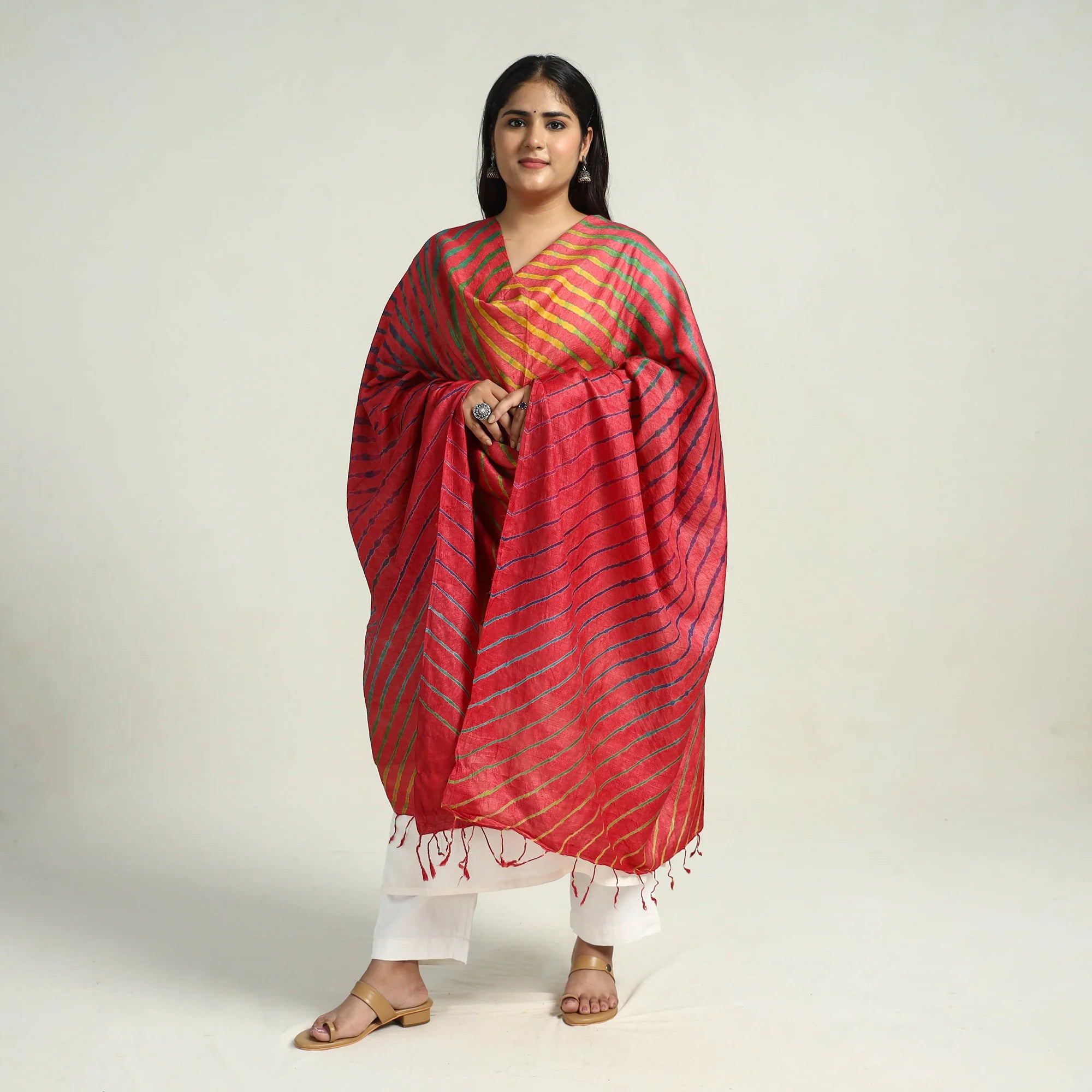
3. Tie-Dye Leheriya Kota Doria Saree
Breezy, sheer, and oh-so-colourful! Our Kota Doria sarees for women capture the playful spirit of Leheriya craft and make it perfect for summer days and festive nights.
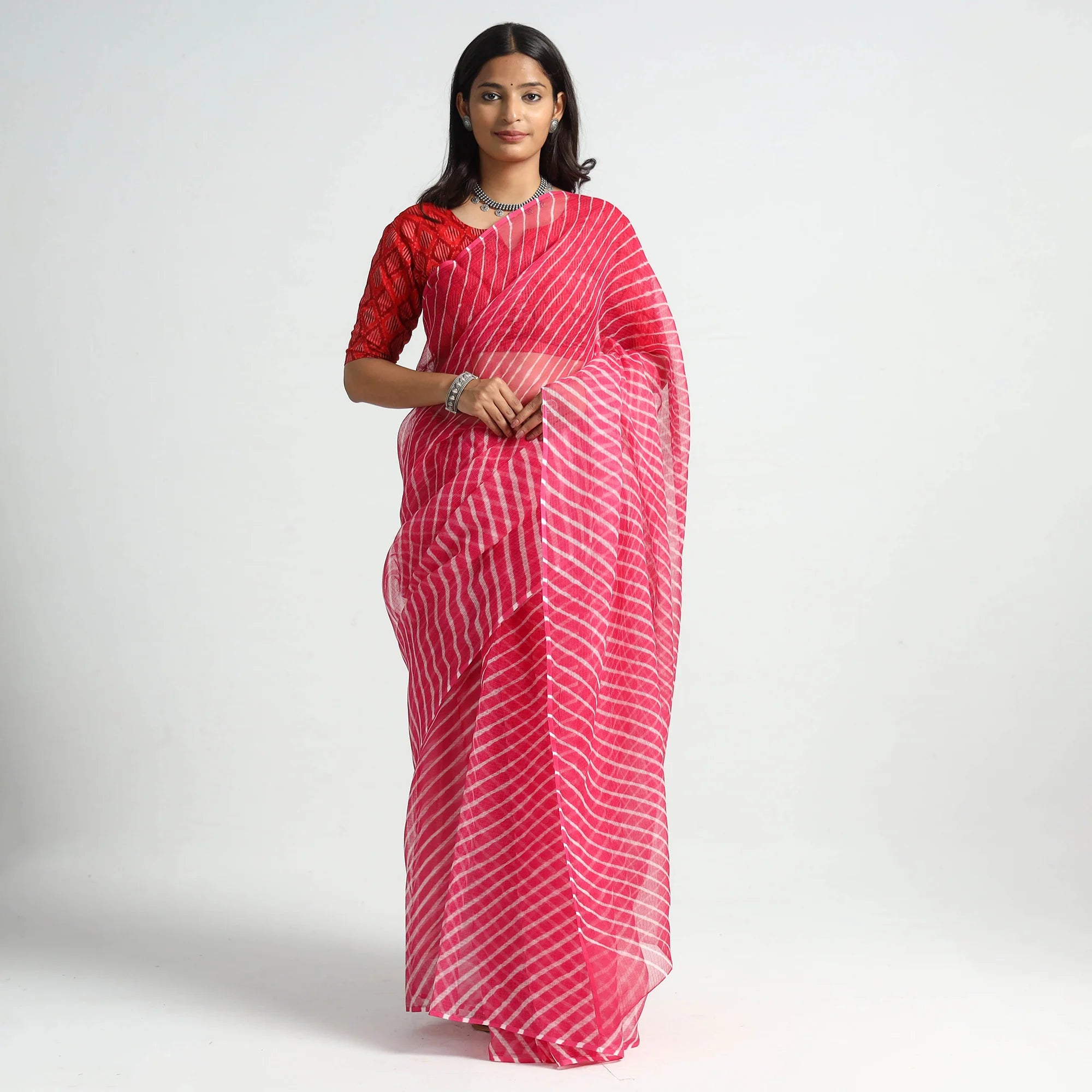
4. Handmade Leheriya Stole
Wear a splash of Rajasthan’s magic with iTokri’s stoles and scarves collection. Our Leheriya stoles for women let you embrace the vibrancy of Leheriya prints.
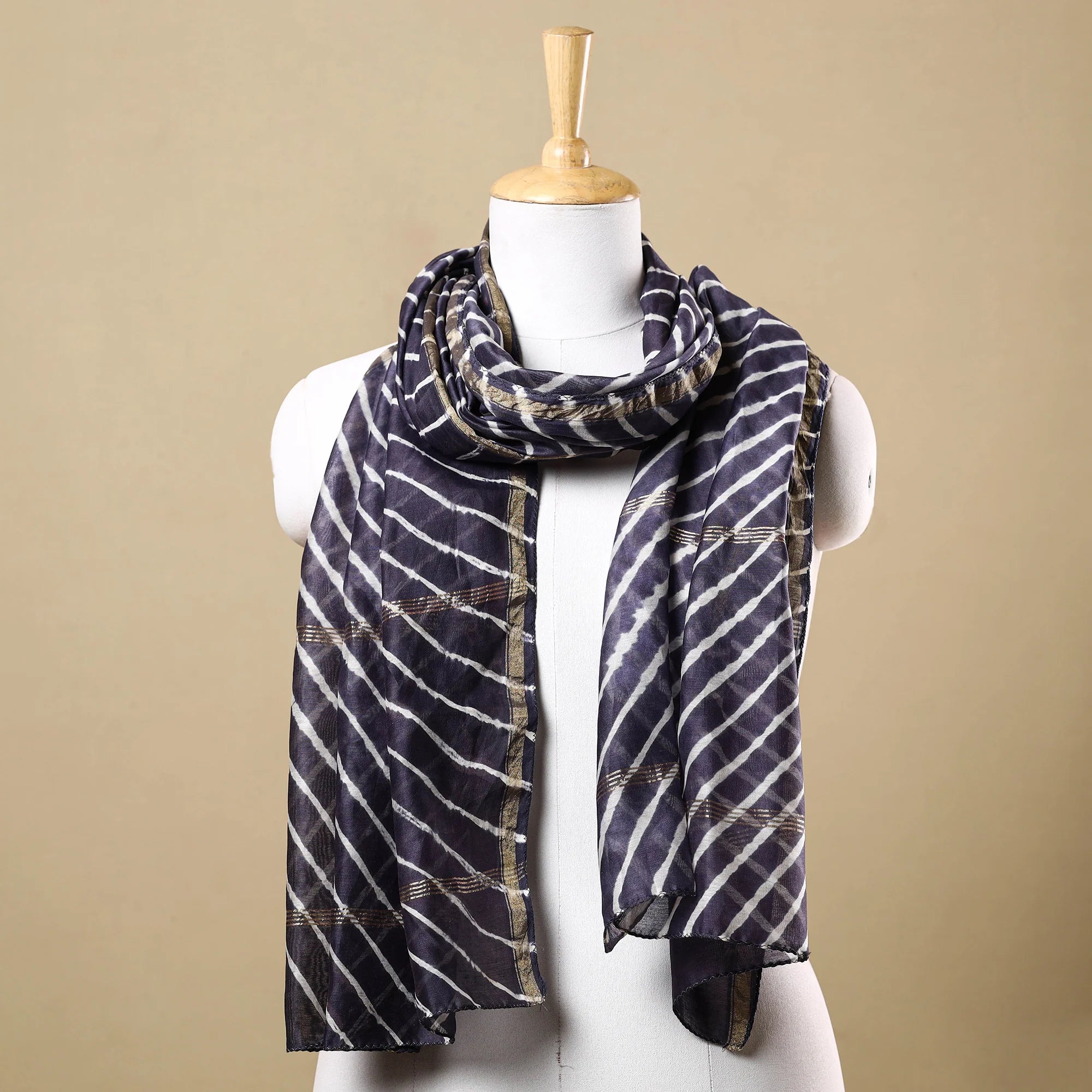
5. Traditional Leheriya Print Kurta
Explore our collection of Leheriya print kurta sets for women, which brings Rajasthan’s heritage to your everyday wardrobe with a fun twist of colours and comfort.
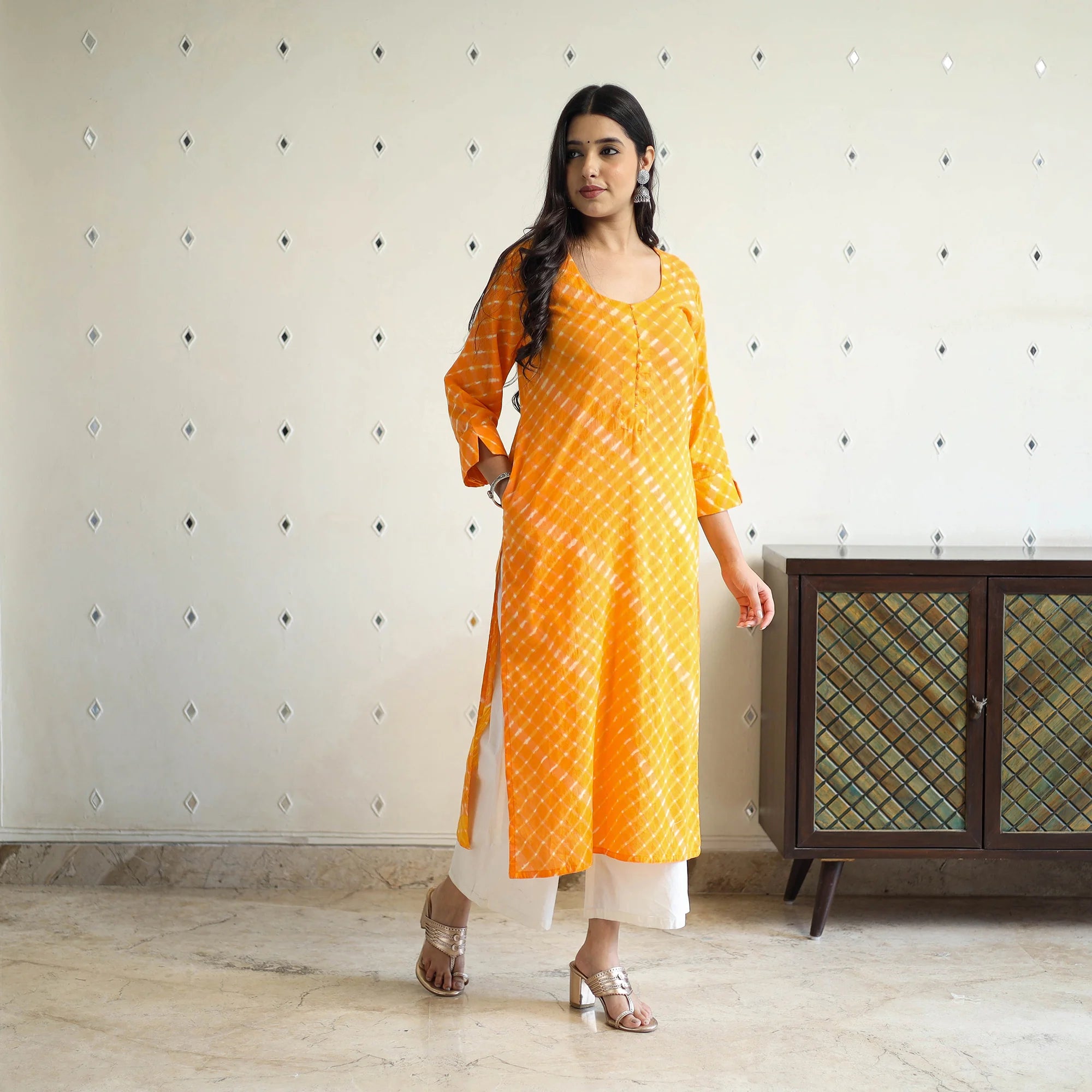
6. Bright Leheriya Cotton Suit Set
Why settle for dull when you can dazzle? iTokri’s Leheriya cotton suit sets for women are bright, bold, and breezy. Turn heads wherever you go with our colourful Leheriya craft collection!
Types of Leheriya Patterns and Colours
Fallen in love with Leheriya print already? Let’s explore the beautiful patterns and colours that make Leheriya craft so special!
-
Basic Wave Pattern: The most common Leheriya pattern has simple wave-like stripes in bright colors that bring a playful and lively feel to the fabric.
-
Double Wave (Do Leheriya): This Lehriya pattern shows two sets of waves crossing each other, and creating a more detailed, eye-catching pattern that adds extra charm to the cloth.
-
Chhoti Leheriya (Small Waves): Tiny wave patterns spread across the fabric, which gives it a delicate, dainty look that’s perfect for lighter, more subtle outfits.
-
Motif Leheriya: This Leheriya design includes extra details like dots, flowers, or shapes within the waves, which makes the fabric more artistic.
-
Multi-Coloured Leheriya: A bright rainbow of colors dances on the fabric, and creates a lively and cheerful design that’s perfect for festivals and celebrations.
-
Pastel & Earthy Tones: Soft pinks, greens, and earthy browns give Leheriya print a modern touch.
-
Traditional Colours: Classic Leheriya pattern often has bold reds, pinks, yellows, and blues.
-
Natural Dyes: In the recent past, artisans used natural dyes from plants and minerals, which gives the fabric authentic, eco-friendly colors that stay bright and last long.
How iTokri Keeps Leheriya Alive Today
embracing India's age-old fabric printing techniques but also helping artisans to preserve the timeless Leheriya craft in India.
Conclusion: Leheriya: Preserving the Waves of Rajasthan’s Craftsmanship
Leheriya embodies the vibrant spirit of Rajasthan and is more than just a collection of colourful stripes. The joy of monsoon rains and the spirit of desert winds are captured in every Leheriya design. Indian artisans, with their patience and dedication, have been carefully creating beautiful Leheriya prints that carry their legacy across generations.
With a unique collection of rare Indian Handicrafts online and free alteration services on selected items, iTokri is the perfect online destination for everyone who loves and respects India’s handicrafts.
Frequently Asked Questions On Leheriya Prints
What is Leheriya, and where does it come from?
Leheriya craft is a tie-dye traditional Indian textile known for its wavy striped patterns. It has originated from Rajasthan, especially the cities of Jaipur and Udaipur.
How is Leheriya different from Bandhani?
Leheriya design has wave-like striped patterns, while Bandhani has small dot patterns made by tying tiny knots before dyeing.
Why is Leheriya worn during the monsoon season?
Leheriya’s bright, fresh colours and light fabric make it perfect for the rainy monsoon season.
What fabrics are used in Leheriya textiles?
Leheriya pattern is usually made on soft fabrics like cotton and silk, which are lightweight and comfortable, especially in warm weather.
Are Leheriya products handmade?
Yes, traditional Leheriya printing is handmade using a skilled tie-dye process passed down through generations.
Where can I buy original Leheriya sarees or dupattas online?
You can buy authentic Leheriya sarees and dupattas at a trusted Indian handicrafts online platform, iTokri, a store with a story.
Can Leheriya be worn every day or only on festivals?
Leheriya can be worn both daily and during festivals. Light cotton Leheriya fabric is great for casual wear, while silk versions are perfect for special occasions.
How should I care for my Leheriya garments?
Wash Leheriya clothes gently by hand with mild detergent in cold water. Avoid direct sunlight when drying to keep colours bright and vibrant.
Are there modern versions of Leheriya designs?
Yes, many designers create modern Leheriya patterns by mixing traditional styles with contemporary designs and colours to suit today’s fashion.
Citations –
Most Popular Reads –
What Is Kalamkari? Discover the Ancient Indian Art Form with iTokri
The Art of Slow Fashion: Handmade vs. Mass-Produced Outfits
The Art of Handmade Fashion - Custom Stitched Outfits for Personal Style
Choosing Fabrics - How to Find the Perfect Match for Your Style
 Verified Purchase
Verified Purchase
















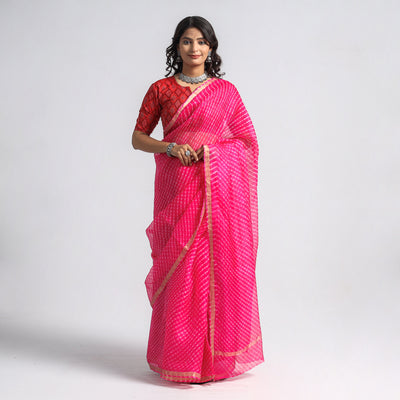

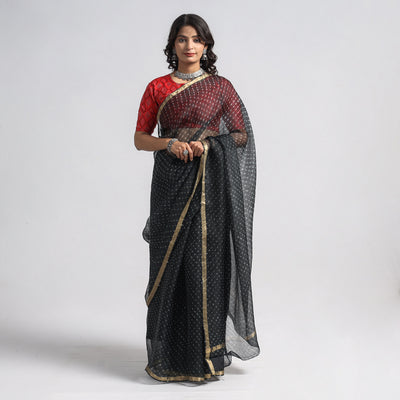


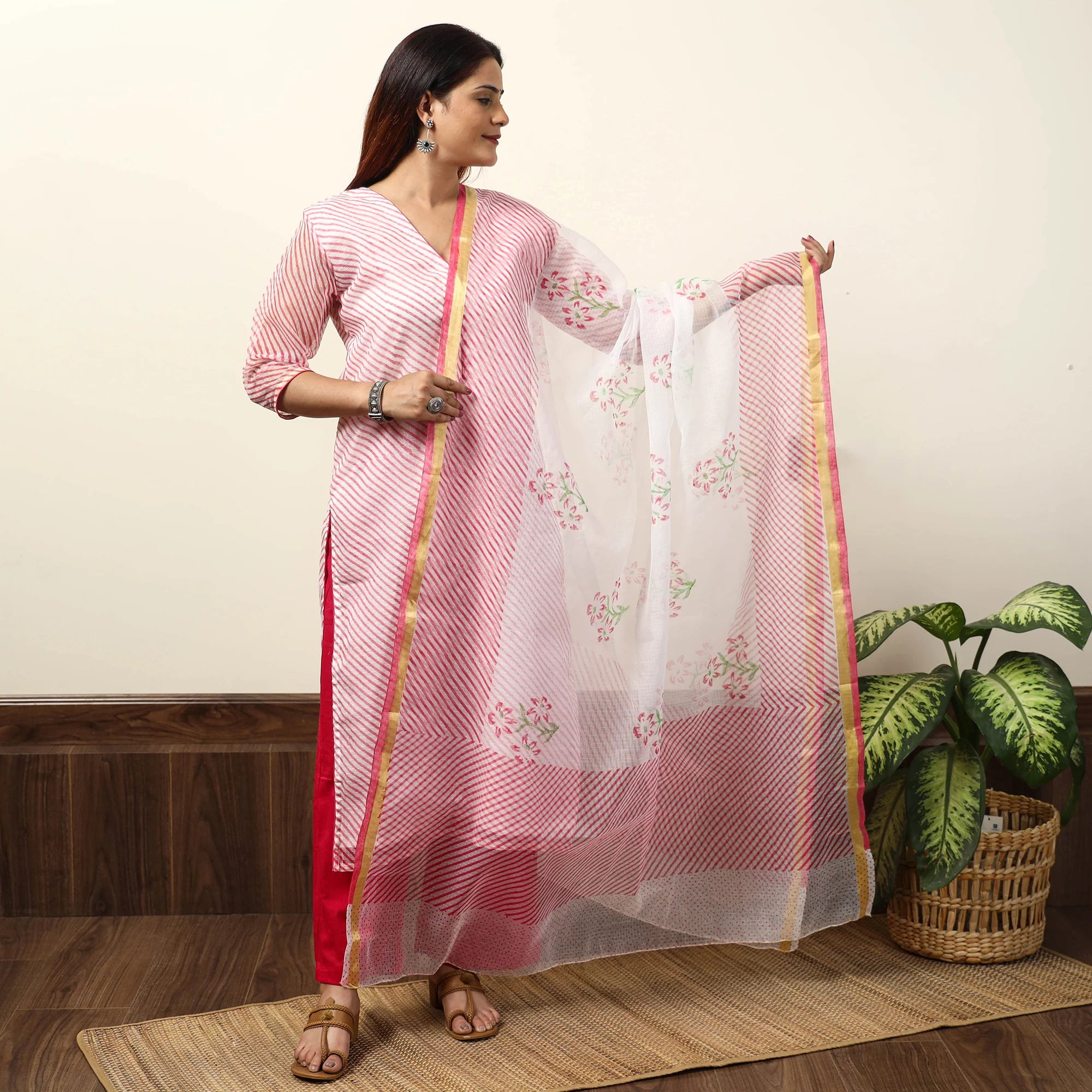



Leave a comment (all fields required)